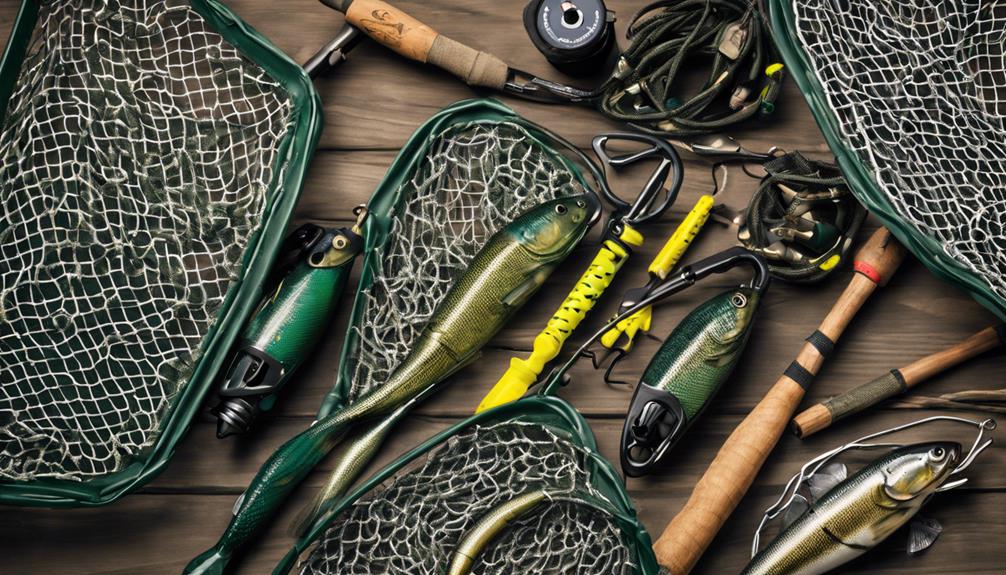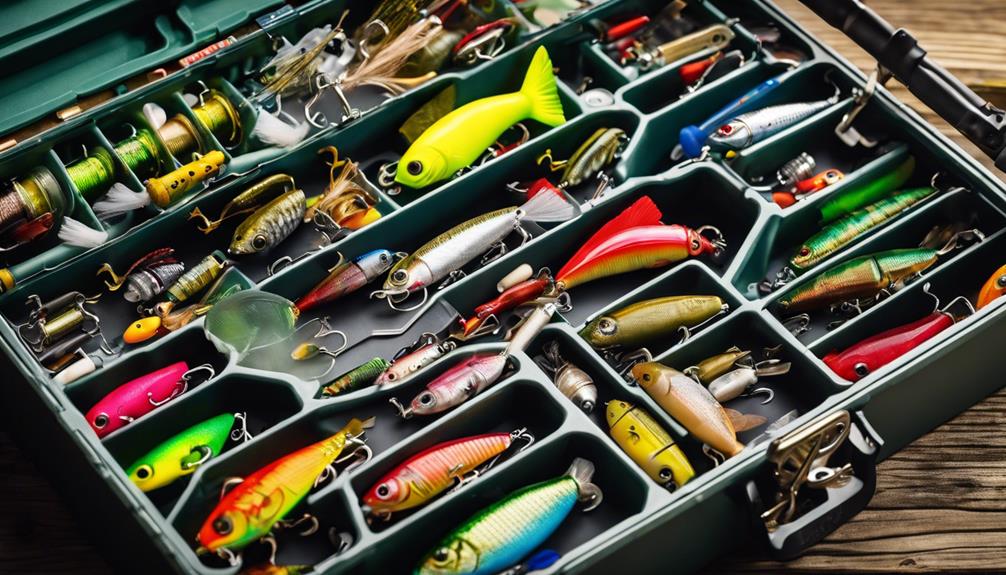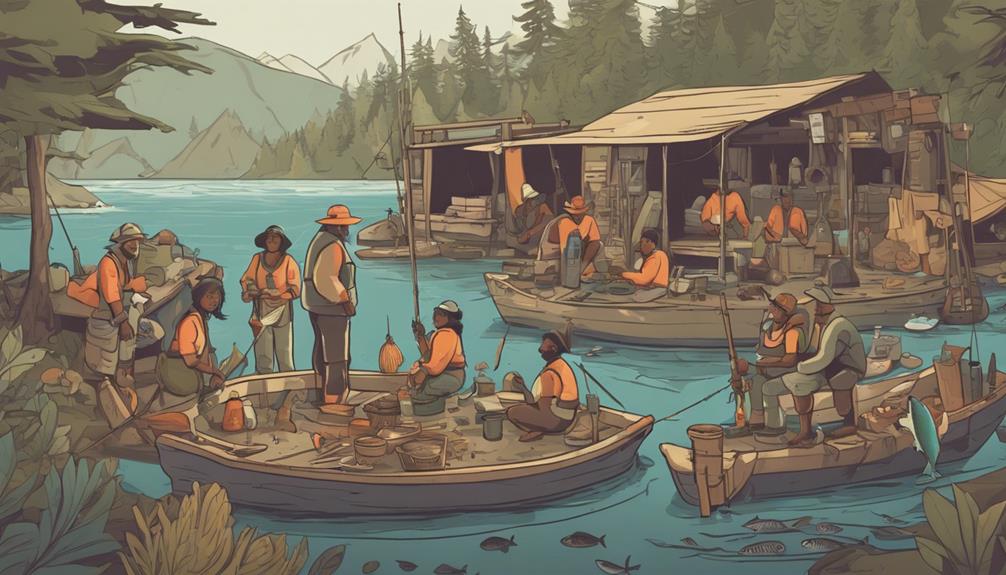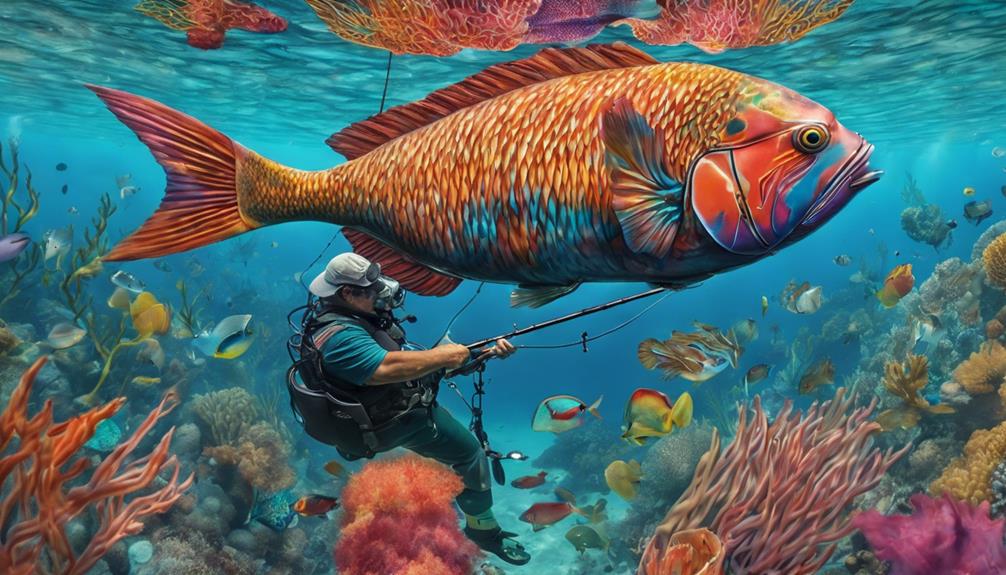Picture yourself on a serene lake at dawn, the mist rising off the water as you cast your line in search of the elusive walleye. As you feel that first tug on your rod, you know the thrill of the catch is unmatched.
But to truly master the art of walleye fishing, you need the right gear. From selecting the perfect rod and reel combo to utilizing advanced electronics and sonar technology, each piece plays a crucial role in your success on the water.
Rod and Reel Combo
When selecting a rod and reel combo for walleye fishing, prioritize a lightweight yet durable setup for optimal performance. A lightweight rod will allow you to fish for hours without fatigue, while durability ensures your gear can handle the fight walleye put up. For casting accuracy, consider a rod with a medium power rating and fast action. This combination provides the sensitivity needed to feel subtle bites while still having enough backbone to cast accurately to where the walleye are lurking.
To maximize your hook setting techniques, opt for a rod with a sensitive tip. This sensitivity allows you to detect even the slightest of nibbles, giving you a chance to set the hook swiftly. Additionally, choose a reel with a smooth drag system to prevent the line from breaking during the hook set. When a walleye strikes, a smooth drag will give you the control needed to set the hook effectively without risking a snapped line.
Line and Leader Selection
For optimal walleye fishing performance, selecting the right line and leader is crucial. When targeting walleye, your choice of line and leader can greatly impact your success. Here are some key considerations to keep in mind:
- Knot Tying Techniques: Proper knot tying is essential to ensure that your line stays secure when battling a walleye. Practice tying strong knots like the Palomar or Improved Clinch knot to prevent break-offs.
- Fluorocarbon vs. Braid: Fluorocarbon lines are nearly invisible underwater, making them a great choice for clear water conditions where walleye might be spooked by heavier lines. On the other hand, braided lines offer excellent sensitivity, crucial for detecting subtle walleye bites in deeper waters.
- Weight and Sinker Options: Choosing the right weight and sinker can help you effectively present your bait at the desired depth. Consider using bottom bouncers or slip sinker rigs to keep your bait near the bottom where walleye often feed, and adjust the weight based on the water depth and current.
Selecting the appropriate line and leader combination, mastering knot tying techniques, and understanding the advantages of different materials like fluorocarbon and braid will enhance your walleye fishing experience. Additionally, having the right weight and sinker setup can make all the difference when it comes to setting the hook efficiently and reeling in those elusive walleye.
Jigging Lures
To maximize your success in catching walleye, utilizing the right jigging lures is essential for enticing bites and effectively targeting these elusive fish. When it comes to jigging techniques, choosing the appropriate lure color can make a significant difference. For walleye, colors like chartreuse, white, and silver are popular choices as they mimic the baitfish that these predators feed on. It's crucial to pay attention to depth control while jigging. Adjust your jigging cadence and depth based on where the walleye are located in the water column.
When selecting jigging lures, consider options like the Rapala Jigging Rap or the Northland Buck-Shot Rattle Spoon. These lures are designed to create an enticing action that triggers walleye to strike. Experiment with different sizes and weights to find what works best based on the current conditions. Incorporating a variety of jigging techniques into your fishing approach can help you determine what the walleye are responding to on any given day. Remember that walleye can be finicky, so being adaptable with your jigging cadence is key to enticing bites.
Live Bait Options
Consider incorporating minnows or leeches as live bait options when targeting walleye, as these natural baits can be highly effective in enticing bites from these fish. When choosing live bait for walleye fishing, keep in mind that these fish are known to be finicky at times, so having a variety of live bait options can increase your chances of a successful fishing trip. Here are some live bait options to consider:
- Minnows: Small minnows, such as fathead minnows or shiners, are popular choices among walleye anglers. Hooking a lively minnow through the lips or back near the dorsal fin can create an enticing presentation that walleye find hard to resist.
- Leeches: Another effective live bait option for walleye is leeches. Walleye are naturally drawn to leeches due to their wriggling motion in the water. Hook a leech lightly through the sucker end to keep it lively and active in the water.
- Nightcrawlers: While not as commonly used as minnows or leeches, nightcrawlers can also be effective live bait for walleye. Nightcrawlers can be threaded onto a hook to create a natural presentation that can attract walleye, especially in low light conditions or when fishing in murky waters.
Trolling Techniques
When trolling for walleye, adjust your speed and depth to effectively cover a larger area and increase your chances of hooking into these elusive fish. Trolling techniques involve presenting your bait or lures at the right depth where walleye are actively feeding. One key aspect of successful trolling is maintaining control over the depth at which your bait is running. Depth control is crucial as walleye tend to be found at different levels depending on factors like water temperature, time of day, and light conditions.
To achieve proper depth control, consider using tools like inline weights, diving planers, or downriggers. These tools can help you get your bait down to where the walleye are holding. Adjust your trolling speed accordingly to ensure your bait is running at the desired depth. Slower speeds are generally preferred when trolling for walleye as it allows your bait to stay in the strike zone longer.
Experiment with different trolling speeds and depths until you find what works best on a given day. Pay attention to any signs of walleye activity on your sonar or by observing bird activity on the water surface. By mastering trolling techniques and depth control, you can significantly increase your chances of landing more walleye during your fishing trips.
Electronics and Sonar
Adjusting your electronics settings and interpreting sonar readings correctly can greatly enhance your walleye fishing success. When it comes to walleye fishing, having the right depth finders and utilizing GPS navigation can make a significant difference in your catch rate. Here are some key points to consider:
- Quality Depth Finders: Investing in a high-quality depth finder is crucial for locating walleye, as these fish tend to stay close to the bottom of the water. Look for a depth finder that offers clear and detailed readings to help you pinpoint the depth at which the walleye are most active.
- GPS Navigation: Incorporating GPS navigation into your fishing arsenal can help you mark productive spots and navigate to them with ease. By marking waypoints where you've had success in the past, you can create a map of hotspots for walleye fishing. GPS technology also allows you to track your movements and analyze patterns for more effective fishing.
- Interpreting Sonar Readings: Understanding how to interpret sonar readings is essential for identifying fish and structures underwater. Pay attention to the shapes and movements displayed on your sonar screen, as walleye often appear as arches or lines close to the bottom. By honing your sonar interpretation skills, you can target walleye more accurately and improve your overall fishing experience.
Net and Gripper Tools

For efficient walleye fishing, having the right net and gripper tools is essential to safely land and handle your catches. When it comes to nets, opt for a model with a rubber-coated mesh to prevent hook snags and potential injuries to the fish. Remember to regularly check and maintain your net to ensure the mesh remains intact and the frame sturdy. Net maintenance is crucial to prevent tears that could harm the fish or lead to lost catches.
When using grippers, employ proper techniques to minimize harm to the fish. Grippers should be used sparingly and only when necessary, as excessive handling can stress the fish. When gripping a walleye, aim to support its body weight evenly to avoid injuring its jaw or internal organs. Additionally, avoid squeezing too tightly, especially around the gills, to prevent unnecessary harm.
After landing a walleye, gently remove the hook using appropriate tools, such as long-nose pliers, to minimize handling time. If the fish needs to be measured or photographed, do so quickly and efficiently to reduce stress. By practicing proper gripper techniques and ensuring net maintenance, you can safely handle walleye catches and contribute to conservation efforts.
Tackle Storage Solutions
Consider organizing your walleye fishing gear with efficient tackle storage solutions to ensure easy access and protection for your equipment. Proper tackle organization and storage solutions can make a significant difference in how smoothly your fishing trips go.
Here are some tips to help you keep your gear in top shape:
- Invest in a quality tackle box: A sturdy tackle box with adjustable compartments will help you keep your lures, hooks, weights, and other small items neatly organized and easily accessible. Look for a box with secure latches to prevent accidental spills.
- Use clear plastic bags for soft plastics: To prevent your soft plastic baits from melting into a sticky mess, store them in individual clear plastic bags. This not only keeps them organized but also makes it easier to see what you have without opening each bag.
- Consider a rod and reel storage rack: To protect your rods and reels from damage during transportation and storage, invest in a rod and reel storage rack. These racks can help prevent tangles, breakage, and other issues that may arise from improper storage.
Frequently Asked Questions
What Are Some Common Mistakes to Avoid When Jigging for Walleye?
When jigging for walleye, avoid common mistakes like fishing at the wrong depth and using the wrong hook size.
Make sure your line isn't too visible and adjust your jigging speed accordingly.
By paying attention to these factors, you can increase your chances of a successful catch.
Stay focused on the details to improve your fishing technique and reel in more walleye on your next outing.
How Can Weather Conditions Impact Walleye Fishing Success?
Weather conditions play a crucial role in your walleye fishing success. The impact of moon phases can influence fish activity levels, with full moons often leading to more feeding.
Additionally, water temperature is vital, as walleye tend to be more active in specific temperature ranges. Pay attention to these factors to increase your chances of a productive fishing trip.
Are There Any Specific Techniques for Targeting Trophy-Sized Walleye?
To target trophy-sized walleye, consider using specific techniques. Trolling techniques are effective for catching big walleye. Equip yourself with the right gear, like heavy-duty rods and reels.
Night fishing strategies can also be fruitful, as walleye are more active during the dark hours. Locating hotspots, such as drop-offs or rocky areas, can increase your chances of landing a trophy walleye. Experiment with different approaches to see what works best for you.
What Are Some Alternative Live Bait Options That Are Effective for Walleye?
When fishing for walleye, consider alternative live bait options like leeches, minnows, or nightcrawlers. These can be effective in attracting the fish.
Artificial lures are also a good choice. If you're fishing at night or in deep waters, using glow-in-the-dark lures or jigs can increase your chances of a successful catch.
Experiment with different bait and lure options to find what works best for you.
How Can Anglers Effectively Locate Walleye in Different Bodies of Water?
To effectively locate walleye in different bodies of water, use depth finders and sonar to pinpoint their whereabouts. Pay attention to water temperature and currents, as walleye tend to be found in specific temperature ranges and areas with suitable currents. By utilizing these tools and considering the environmental factors, you can increase your chances of successfully locating walleye during your fishing trips.
Conclusion
Now that you have all the top walleye fishing gear recommendations, you're ready to hit the water and reel in those big catches. Remember to choose the right rod and reel combo, line and leader selection, jigging lures, live bait options, trolling techniques, electronics and sonar, net and gripper tools, and tackle storage solutions for a successful fishing trip.
Gear up, head out, and enjoy the thrill of walleye fishing!



